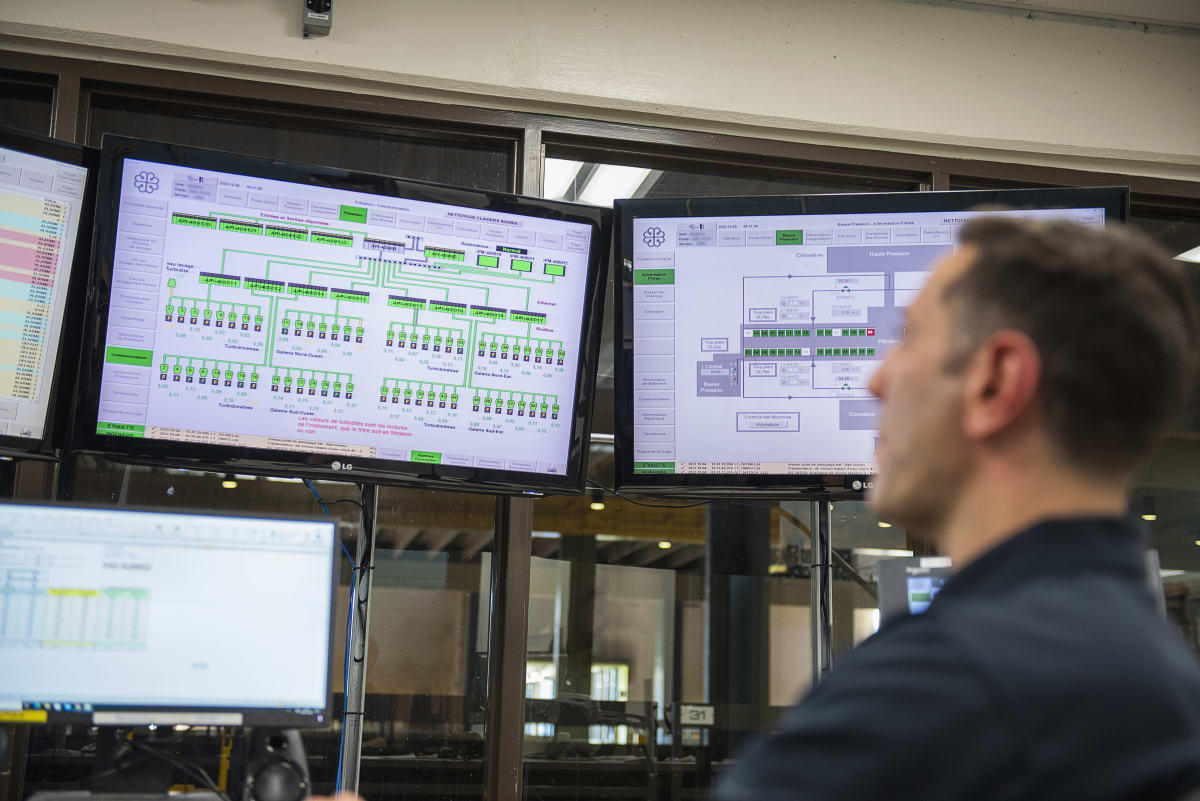Visit to a water treatment plant on the cutting edge of technology
Water treatment plants must operate continuously in order to provide quality drinking water. This achievement is possible thanks to modern facilities like those at the Charles-J.-Des Baillets treatment plant, the third largest in Canada.
Take a look behind the scenes at the Charles-J.-Des Baillets water treatment plant with operator Amir Sammar, who carefully oversees each stage of the drinking water treatment process.
Providing more than half of the island of Montréal’s drinking water
From water collection in the St. Lawrence River until water leaves the treatment plant. Amir Sammar is at the control centre making sure all operations run smoothly. This is where data from various devices are analyzed and water treatment operations are performed 24 hours a day, seven days a week. His greatest challenge is keeping his cool and making the right decisions.
The plant operates all the time. If a pump stops, another starts. A relay system with the Atwater treatment plant ensures uninterrupted distribution of water even if there is an incident at one of the other facilities. The Charles-J.-Des Baillets treatment plant has a massive system, as it produces more than half of the drinking water on the island of Montréal.
The equivalent of 292 Olympic pools each day
The Charles-J.-Des Baillets treatment plant in LaSalle has four stories and is home to equipment that treats some 730 million litres of drinking water each day — the equivalent of 292 Olympic swimming pools.
More than 40 employees in action
A unique aspect of the treatment plant is that it has its own specialized maintenance team with mechanics, instrumentation and electricity specialists. In total, more than 40 employees work together day and night to ensure that all stages of drinking water treatment run smoothly.
Six stages to produce drinking water
Water is:
- Taken from the river
- Run through a screen to filter out large debris
- Coagulated to remove suspended particles
- Filtered with sand
- Sanitized by the ozonator and treated with ultraviolet rays to kill bacteria and viruses
- Treated with sodium hypochlorite to conserve the water’s purity throughout its long journey to water distribution systems
When treatment is complete, two large ducts carry water to all of the city’s boroughs as well as the municipalities of Charlemagne, Montréal-Est, Westmount, Côte-Saint-Luc, Montréal West, Mount Royal and Hampstead.
Quick search
Need help?
Contact us if you have questions.
Are you sure you want to leave this page?
This page is not available in English. You will be redirected to the English home page.





